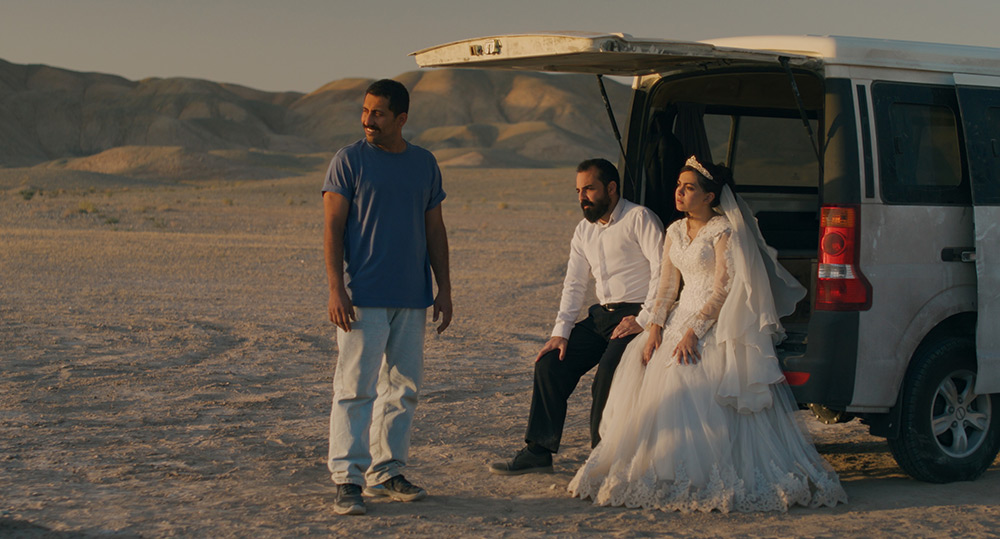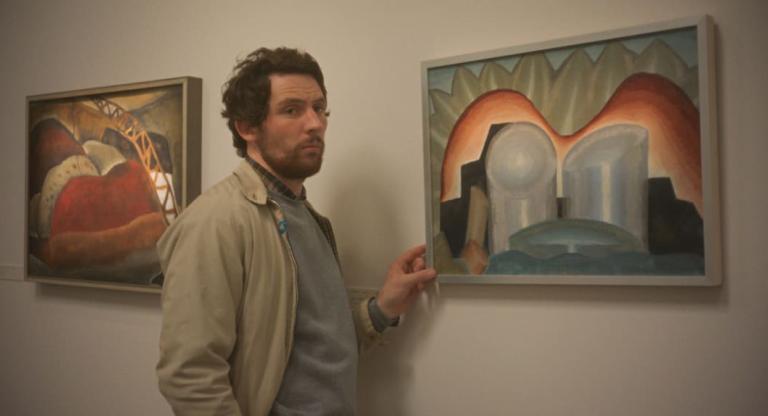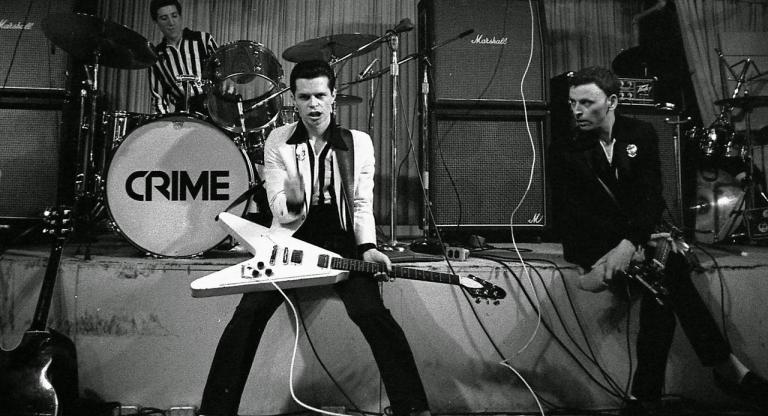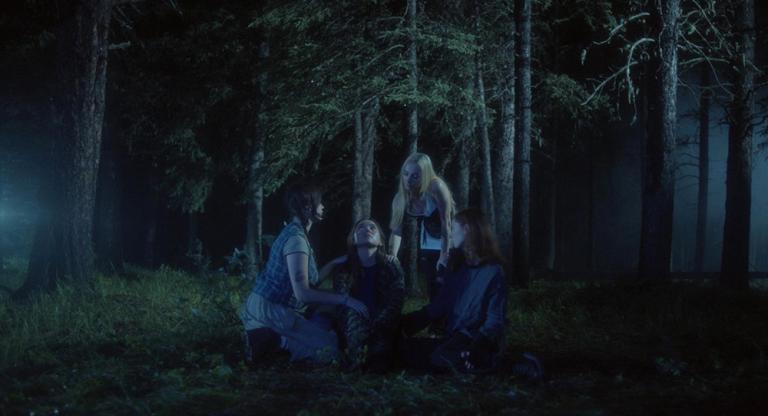Jafar Panahi’s career has proven to be an exercise in adaptability. His highly publicized tactics of clandestine production, circumventing the approval of Iran’s Ministry of Culture, have laid out a blueprint for filmmakers producing underground critiques of their country’s patriarchal, theocratic fundamentalism. Time has only proven Panahi’s methods of speaking truth to power increasingly prescient as state-sanctioned surveillance moves ever more swiftly to crush dissent here in the West.
Case in point: his latest film, It Was Just an Accident, which is the closest to a clear-cut genre film he’s made since Offside (2006), his subversive take on the sports comedy. This markedly darker thriller follows Vahid (Vahid Mobasseri), a mechanic who encounters a man that he believes to be his former interrogator (Ebrahim Azizi) based on the squeaks of his prosthetic leg. Dual veins of claustrophobic suspense and gallows humor color Vahid’s epistemic uncertainty after he kidnaps his suspected terrorizer and wrangles together a group of fellow victims to debate the identity and deliberate on the fate of the man they know only as “Peg Leg” Eqbal.
Synchronicity and control have long been contradictory bedfellows in Panahi’s corpus, producing a thematic dialectic that constantly urges the viewer to probe the construction of his images. It Was Just an Accident jettisons the reflexivity of Panahi’s past five features to favor a classicism still fraught with slippery subjectivity. Cinematographer Amin Jafari subtly privileges focus from one character to another and, as our conversation revealed, Panahi’s use of sound plays a critical role in constructing diegetic information that aligns the viewer with the ensemble.
Within the lacunae between chance and destiny lies the humanity that guides Panahi’s art. Infusing a nearly theatrical element into his neorealist morality play, It Was Just an Accident is one of Panahi’s most clear-eyed meditations on his unresolved dilemma about the ethical responsibility people bear toward one another within systemic oppression. I spoke to Panahi about how his malleable resilience creatively informs his engagement with this dilemma.
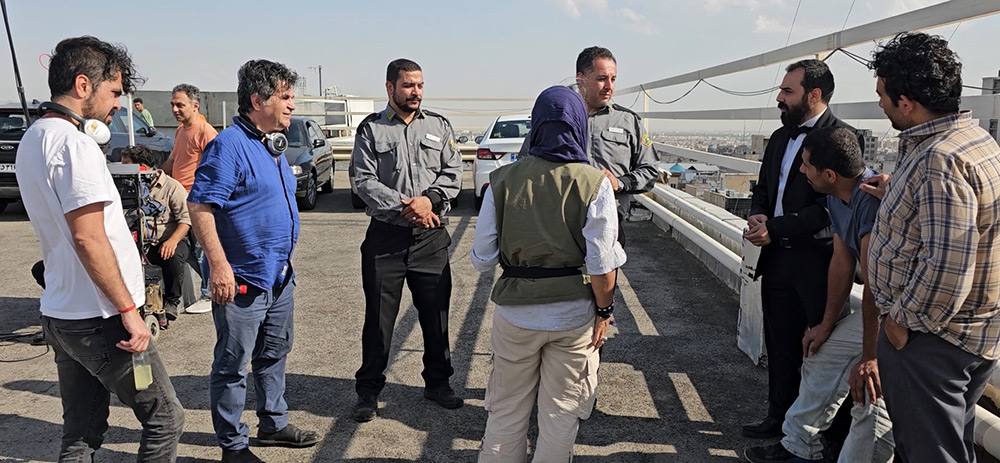
Nick Kouhi: I wanted to dive right into thinking about the writing process, specifically about the element of nicknames for characters and how those nicknames or social roles are imposed upon these characters. When you were writing the script, did you start from the foundation of characters that would fit these archetypes and then find the personalities? Or was it vice versa?
Jafar Panahi: What other nicknames besides Peg Leg?
NK: Jughead, for example.
JP: So, the thing about “Jug-head” was because his kidney hurt and because he had his hand here [at his side], he looked like a jug. It actually is a different translation for the subtitles, which, by the way, I didn't do. In reality, it's a vessel that people take with them to the bathroom. It's a cleaning vessel, and the word in Persian [Aftabeh] is the water vessel that you take to the bathroom. It's like a canister, I think, with which you water flowers. So that's the word that's being used, that is even more derogatory than the jug.
If I were to translate that, I would use that word. During the interrogation process, when my eyes were closed and I was facing the wall, I couldn't see people. I could only hear sounds, and based on those sounds, then I was able to create the characters and imagine them.
I wanted to maneuver on the element of sound and instead of focusing on dialogue or focusing on what was being said as words, I wanted to focus on how sound played out throughout the film because it would stick to the audience’s mind better. So the nickname “Peg Leg” refers to the element of sound again, because we want the sound of the foot to stay with the audience so we can return to it.
NK: I'm very glad you brought up the element of sound because, as you've noted, it's so crucial to the film, both in terms of generating suspense and putting us in the headspace of your characters. Can you speak a little bit about your process when it came to collaborating with your sound team on this film, both in terms of recording on location and with post-production?
JP: Because we don't use music the way it is used in other films—again, because the source is not clear of music—we try to fill the gaps of music with sound.
I had worked on the sound of the foot of Peg Leg from the beginning, from the creation of the script, and I had thought about the fact that I wanted the audience to pay attention to the sound of the foot. But the biggest part of creating sound, besides what you get in the dialogue, is in the process from sound design to post-production. And then it all comes together in the process of mixing.
Some of the sounds are selected based on the location. I'll give you an example. In the location where we have the wedding photography, we learned that there was a place in which the chandeliers made a jingling sound. It was in that location—whenever we had some moments of silence or some moments of suspense in which the audience had some questions—[that] we would create a kind of jingling effect for it to come and go. Or, I very much wanted to bring out the sounds of crows, because in Persian, crows are associated with taking news here and there, and also spying on people. So you hear the crows there, because I wanted to create an effect of some news being taken somewhere else. Somebody is spying on someone. I thought, if we have the sound of crows but we don't see crows, then it becomes unreal. Unreal meaning unrealistic, as in it becomes unrealistic if you don't see the crows. Therefore, later on, all the crows that you see were added to the images with special effects. So these are all elements that get added later on because of the sound.
NK: So the sonic elements include animals, because I know animals are a very important motif in a lot of your films, like in Closed Curtain [2013] and No Bears [2022]. How many of these animals were included in the script and how many were incorporated after the fact?
JP: The element of hitting a dog was part of the script. I absolutely did not want to show a dog getting hit, or like Hollywood films, it just bumping into the car and going up. I didn't want any of that. But I wanted to bring out the sense of accident through the sound of hitting a dog and these pauses of the actor [Ebrahim Azizi] com[ing] out after he gets out of the car, looks at the dog, and comes back in. But I had the sense of wanting to show dogs anyway, because the element of the dog was important. So when you see [that] there is a dog, there are a few dogs following the car from the back window.
Something interesting happened that really helped us. When the car was towed and taken to the body shop, when we arrived there, we saw that there was a dog standing in front of us. The dog came in front of the car—it just sort of marched around us and went away. We had not even thought about the fact that that's a good moment to have a dog.
It's as if [after] the accident that had happened before, another dog was stepping in to say to the guy, “Control your anger,” and stepping between the character of Vahid to not kill the interrogator. Because this happened, we thought of completing the cycle towards the end, when they're driving towards that ending tree scene. You see that with special effects we put a dog there and it's waiting for them. It barks a little before they get out of the car. This happened automatically, in three different places, without us having designed it. Even if we were very smart and we had thought about this, we couldn't have made it up. So it happened by itself and we brought it in.
NK: I wanted to conclude with one last question about the Samuel Beckett reference. Your practice in neorealism is very much cinematic. Why did you choose to reference Beckett and Waiting for Godot?
JP: The most important element for me in that sequence was the waiting. And it's the same sense of waiting that is also true in Beckett's play. Then, the rest are repetitive words and dialogues that just keep on coming up, and that they are waiting for someone or something to come and make something happen. It becomes clear that Hamid and Shiva had a romantic relationship before—saying that they went to see Waiting for Godot together. This made me change the mise-en-scène to somewhat of a theater one. It feels like watching a scene from theater and the audience just following where they go.
It Was Just an Accident screens this evening, and throughout the week, at Film Forum. For this interview, Mr.Panahi was in conversation with the assistance of his translator, Sheida Dayani.
